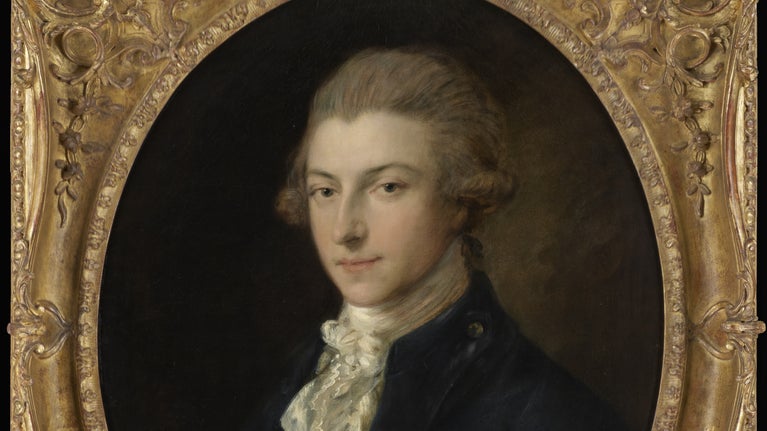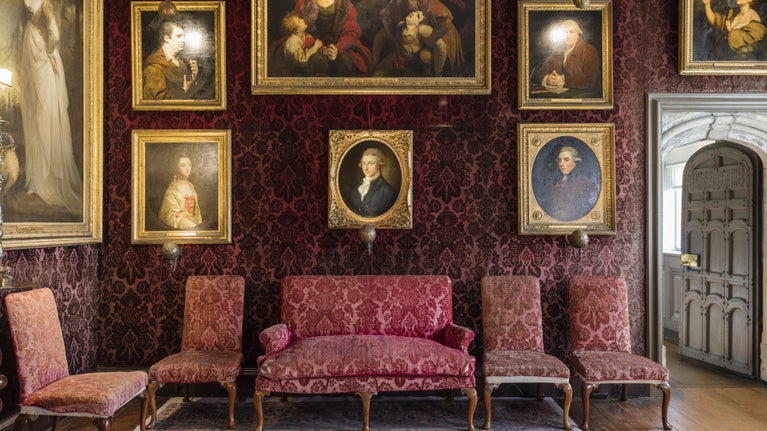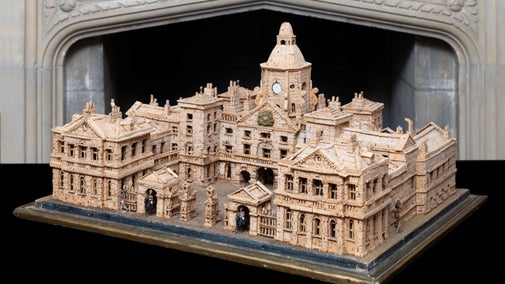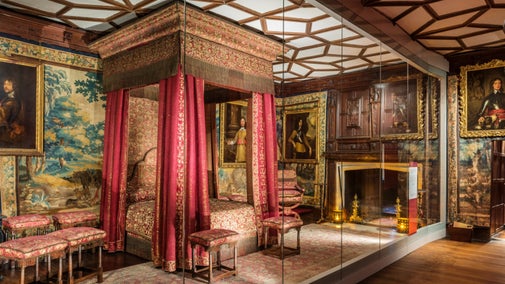
Knole's collections
Explore the objects and works of art we care for at Knole on the National Trust Collections website.


One of the most beautiful and stylish portraits ever to hang on Knole’s walls is Thomas Gainsborough’s painting of the French nobleman, Louis-Pierre Quentin de Richebourg, marquis de Champcenetz. John Chu, Senior National Curator, explains the significance of this picture, explores the life of the subject and recounts how the portrait found its way back to Knole.
By all accounts, Louis-Pierre Quentin de Richebourg, marquis de Champcenetz, lived a life of privilege and daring service as a soldier, fashionable Anglophile and survivor of the deadly assault on the Tuileries Palace in 1792 during the French Revolution.
In the early to mid-1780s, Champcenetz sat for Thomas Gainsborough, one of the most highly acclaimed painters of 18th-century Britain. At this time, Champcenetz and John Frederick Sackville, 3rd Duke of Dorset, had been acquainted for several years and the latter was acquiring landscapes and portraits by Gainsborough on a lavish scale. By 1793 the portrait was recorded at Knole, the Sackville family’s country estate.
The portrait is, in the words of the 1839 guidebook to Knole, an ‘unassuming, but most clever picture.’ The oval, bust-length format was a standard portrait convention of the time.
Gainsborough expertly brings Champcenetz to life; the way the sitter ever so slightly inclines his head and meets the viewer’s gaze out of the corner of his eye creates the impression of a fleeting encounter. It is an ingeniously captured moment of intimate recognition.
The basic brown ‘ground’ layer of paint, upon which the rest of the picture is built up, is left visible at multiple points beneath the exceptional thinness of Gainsborough’s application, especially in the white ‘stock’ that winds around Champcenetz’s neck, the shadow of his cheek and his powdered hair or wig.
The burst of snowy linen and ivory silk on the marquis' chest is formed of a remarkable flurry of wet-on-wet brushstrokes, the varying thinness and dryness of which conjure up the complex folding and twisting of fine textile. It is a captivating mixture of simplicity and artistic skill.

In Gainsborough’s portrait of Champcenetz, the simplicity of the sitter’s costume, not least his blue tailcoat, may well be a deliberate signal of his interest in all things English. As a newfound passion for the relaxed sociability of English customs took hold in France, the close-cut tailcoat – such as the example seen here – became almost an Anglophile uniform.
Quite distinct from the brightly coloured and highly embroidered French silk suits worn by most noblemen in pre-revolutionary France, this tailcoat spoke of fashionable sporting pursuits and the envied freedoms of a country estate. The stylish and practical feature of an additional button-down thong on each side of the lapel was presumably to keep the collar neatly in place during country walks, hunting parties and riding expeditions.
In the decade after he sat for Gainsborough, Champcenetz endured extreme hardship. He was 'gouverneur' of the Tuileries Palace when, on 10 August 1792, it was stormed by Revolutionary forces. Numerous accounts exist of his intrepid escape, which ended with him hiding himself between the mattress and wall of the bed chamber of Grace Dalrymple Elliott, the British mistress of the duc d’Orléans.
Elliott nursed Champcenetz to a better state of health before smuggling him to safety in England with the reluctant assistance of the duc, where he lived until the restoration of the French monarchy in 1814. Through this time he remained friends with the Duke of Dorset. Once back in Paris, Champcenetz resumed his duties as 'gouverneur' of the Tuileries until his death in 1822.
Champcenetz's portrait remained at Knole until 1930, when it was sold to a collector in the United States. There it remained, in several different hands, until its reappearance for sale at auction in 2016 and its acquisition for Knole, permanently returning to a place where the marquis found refuge and solace in his time of turmoil.

Explore the objects and works of art we care for at Knole on the National Trust Collections website.
The art and heritage collections we care for rival the world’s greatest museums. Learn more about the collection of paintings, decorative art, costume, books, household and other objects at historic places.

Discover the stories behind some of the greatest artworks and artefacts looked after by the National Trust, as told in a dedicated book, 125 Treasures from the Collections of the National Trust.

See the breadth of our collection of works of art, furniture and more: we care for around a million objects at over 200 historic places, there’s a surprise discovery around every corner.

Knole is full of treasures and was designed to impress its visitors. Originally an archbishop’s palace, then Royal residence, now home to the Sackville family for over 400 years.

Explore Knole's showrooms to see one of the rarest and most well-preserved collections of Royal Stuart furniture, paintings, objects and textiles – on show since 1605.

Knole was built to impress. Come and explore the grandeur of its showrooms, the hidden secrets of the attics and the rooms Eddy Sackville-West called home in the Gatehouse Tower.

The Knole collection includes more than 300 paintings by 17th and 18th-century masters, many commissioned and collected by Sir John Frederick Sackville, the 3rd Duke of Dorset.
